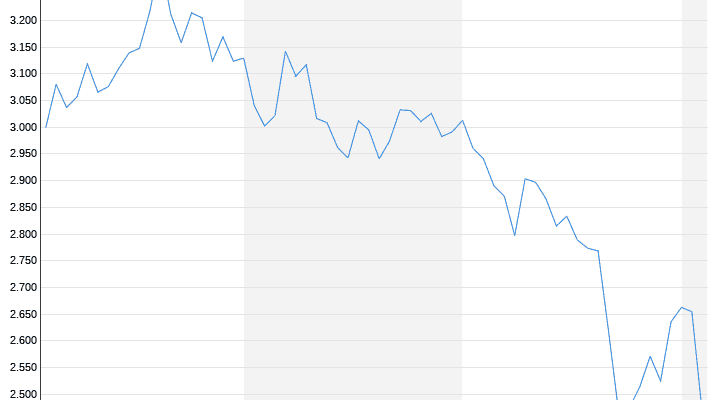Cloud business drives
Amazon stock takes off after hours
02/04/2022, 06:30 am
The US online retailer Amazon surprisingly doubled its profits in the past quarter. One reason is the best shopping weekend in its history with “Black Friday” and “Cyber Monday”. The quarterly figures give the share a catapult start in the middle of a downward slide.
The world’s largest online retailer Amazon earned brilliantly in the Christmas quarter. The US group managed the announced cost avalanche due to the enormous need for personnel and high investments in delivery logistics better than feared – not least thanks to its highly profitable cloud business. However, the growth outlook has clouded significantly after the e-commerce boom during the pandemic. Investors are still satisfied – also because Amazon is increasing prices in the US home market for the first time in years. The stock temporarily rose by 15 percent in after-hours trading, but by the time the market closed it was eight percent down.
Last November, the group also had the “best shopping weekend” in its history in the traditional sale from “Black Friday” to “Cyber Monday” after the US Thanksgiving holiday.
The US group far exceeded profit expectations in the final quarter: the surplus was 14.3 billion dollars (12.5 billion euros), almost twice as high as a year ago. The main reason for the strong increase, however, was Amazon’s stake in the electric car manufacturer Rivian, through which the group was able to post high special proceeds on its balance sheet when it went public in November. Operating profit – which better reflects business performance – fell by almost half to $3.5 billion, Amazon said after the US market closed.
Sales growth was also quite meager by Amazon’s standards. Revenue climbed 9 percent to $137.4 billion. For the current quarter, the company expects sales of between $112 billion and $117 billion, which would correspond to an increase of between three and eight percent over the previous year. Analysts had expected a higher forecast. On the other hand, Amazon’s cloud business with storage space and applications on the Internet continues to flourish. Flagship AWS grew revenue 40 percent to $17.8 billion in the quarter and posted a surprisingly high profit of $5.3 billion.
“As expected, we had higher costs, driven by tight labor markets and inflationary pressures,” said Amazon CEO Andy Jassy in the annual report. Due to the rampant omicron virus variant, these problems are likely to continue in the current quarter. “Despite these short-term challenges, we remain optimistic,” the top manager continued.
Three months ago, Amazon had already warned investors of additional billions in expenditure due to higher wages, global problems in the supply chain and increased freight costs and had prepared for meager numbers. The company’s announcement that it would increase the prices for its “Prime” service in the USA for the first time since 2018 was well received by shareholders.
The service, which offers access to free shipping and streaming services, among other things, is becoming significantly more expensive: from February 18, new US customers will pay $14.99 instead of $12.99 per month and $139 instead of $119 per year. The new tariffs will take effect for existing customers in March. According to Amazon, no higher prices are initially planned outside the USA. However, there is plenty of scope here. In Germany, the “Prime” subscription has so far been significantly cheaper than in the USA at 69 euros per year or 7.99 euros per month.
